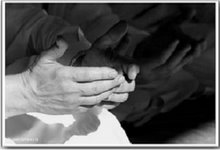
Building a New Heart From Old Tissue
By Steve Mitchell
ScienceNOW Daily News
14 January 2008
Donated hearts for lifesaving transplants are scarce, but now researchers may have hit upon a way to generate the blood-pumping organs in the lab--at least in rats. The approach, which involves transplanting cells from a newborn rat onto the framework of an adult heart, produced an organ that could beat and pump fluid. Further refinement will be necessary before the technique is ready for people, but it could also generate other organs.
Approximately 3000 patients in the United States are on the waiting list for a heart transplant, but only about 2000 donor organs become available each year. Stem cells, which can give rise to heart tissue, offer a potential solution. But to form an entire heart, the cells require a framework, or scaffolding, to grow on, and finding an adequate structure has proven difficult. Now, a team led by bioengineer Doris Taylor of the University of Minnesota, Minneapolis, has shown that old hearts stripped of their cells may provide a fix for the scaffolding problem.
Taylor's team started with a heart removed from an adult rat. The researchers soaked it in chemicals to remove the living cells, leaving behind a "skeleton" composed of the heart's nonliving structural tissues, which are made of proteins and other molecules. Onto this scaffolding the researchers placed heart cells from a newborn rat, which are not stem cells but can give rise to multiple types of tissue. The cells took to their new home and after 8 days had assembled into a functioning heart that beat and pumped fluid, the researchers reported online 13 January in Nature Medicine. The new organ had only 2% of the pumping force of an adult heart, but Taylor says that she and her colleagues have since repeated the procedure with about 40 hearts and found that they can produce a stronger organ by adding more cells and giving them more time to grow.
To apply this method to people, the heart scaffolding could come from either human cadavers or pigs, Taylor says. Adult stem cells, such as those found in bone marrow, could be taken from patients awaiting transplants and used to grow the new heart.
Wolfram Zimmermann, a tissue engineer at the University Hospital in Hamburg, Germany, calls the approach exciting but cautions that it's a long way from being ready for use in people. Researchers still have to address several issues, such as identifying an appropriate stem cell that can give rise to heart tissue and working out ways to optimize the growth of the cells so that they ultimately produce a functional heart.
Clyde Yancy, a cardiologist at Baylor University Medical Center in Dallas, Texas, says pig hearts may not be suitable scaffolding because the body could reject them, even with the use of medications to suppress the immune system. Pig heart valves are currently implanted into humans, but Yancy says that an entire heart could prove to be too much for the body to tolerate.





No comments:
Post a Comment